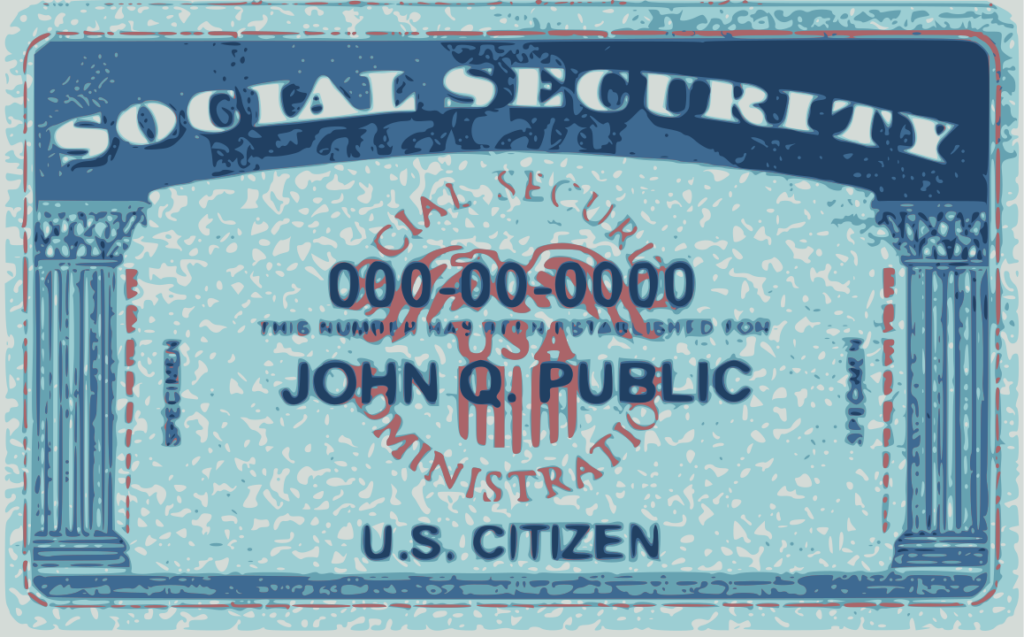Achieving financial independence and the option to retire early (FIRE) is a growing aspiration among many, including African Americans, who often confront unique financial challenges. The FIRE movement advocates for intense savings and investment strategies, enabling individuals to gain the freedom to retire far earlier than the traditional retirement age.
A firm grasp of financial literacy is the cornerstone of this journey. Understanding how to manage your finances effectively allows you to take control of your economic future and pave the way to financial liberation.
Investing is a critical component on the road to FIRE. It’s not just about saving money, but also about making informed investment choices that will grow your wealth over time. You need to develop a strategy that aligns with your financial goals while considering your risk tolerance. Navigating systemic barriers to financial growth requires resilience and a solid plan, including setting clear financial targets, establishing a robust savings rate, and making prudent investment decisions.
Embarking on the FIRE journey involves systematically tackling debt, increasing your income streams, and optimizing your savings. It is essential to create a budget incorporating aggressive savings goals to fund your early retirement while ensuring that this budget aligns with your lifestyle and long-term financial objectives.
Additionally, knowledge about retirement savings and the racial disparities in wealth can inform your approach, helping you to address these challenges with foresight and preparing you for a secure financial future.
Understanding FIRE

The FIRE movement is more than just saving money; it’s about transforming your relationship with work and finances to secure freedom and independence.
History and Philosophy

The FIRE (Financial Independence, Retire Early) movement began taking shape in the 1990s, greatly influenced by the book “Your Money or Your Life” by Vicki Robin and Joe Dominguez. This philosophy encourages you to reassess your expenditures, amplify your savings, and invest wisely, ultimately aiming to detach from the need to work for income much earlier than traditional retirement age.
Key Principles of FIRE

Key Components of FIRE:
- Savings: Aim to save a significant portion of your income—often 50% or more.
- Expenses: Aggressively minimize your expenses to maximize your savings rate.
- Investment: Invest your savings strategically to create income that can replace your paycheck.
Prominent voices in the FIRE space, such as Mr. Money Mustache (Pete Adeney), the Financial Samurai (Sam Dogen), and the Mad FIentist, often emphasize frugality, investment in low-cost index funds, and real estate to build wealth.
FIRE Variants: Fat, Lean, and Barista

FIRE comes in different flavors, each with unique qualities:
- Fat FIRE: This variant involves maintaining a traditional lifestyle while saving aggressively for an early retirement. You strive for a higher savings target, which includes a more comfortable and often luxurious retirement.
- Lean FIRE: Characterized by extreme frugality, Lean FIRE aims for a minimalist lifestyle before and after retirement. You focus on cutting expenses to the bone to achieve financial independence on a smaller nest egg.
- Barista FIRE: This approach is a mix, where you save enough to cover basic expenses but continue to work part-time (like a barista) for additional income and potential benefits. It can offer a balanced path to early retirement without extreme frugality or savings.
Your journey to financial independence will be unique, with your choice among Fat, Lean, or Barista FIRE influenced by personal goals, income levels, and desired lifestyle.
Beginning Your FIRE Journey

Embarking on the path to Financial Independence, Retire Early (FIRE) requires meticulous planning and a deep understanding of your financial landscape. This journey to economic empowerment is rooted in clear goal-setting, disciplined budgeting, and a firm grasp of the numbers that will usher you into early retirement.
Setting Financial Goals

Your FIRE journey is underpinned by specific financial goals that align with your vision for the future. Creating achievable and measurable goals is the first step. Your objectives might range from eliminating debt to accumulating sufficient investment income to cover your living expenses. It’s important to consider short-term milestones, like building an emergency fund, as well as long-term targets, such as acquiring income-generating assets.
- Short-term Goals: Emergency fund equivalent to 6 months of living expenses.
- Long-term Goals: Investment assets yielding annual income to cover your expenses.
Creating a Budget

A robust budget forms the backbone of your FIRE plan. It’s about understanding your income versus expenses to optimize your savings rate. Craft a budget that accounts for all your annual expenses—both essential and discretionary. Prioritize essential expenses, including housing, utilities, food, and healthcare, while finding opportunities to reduce or eliminate unnecessary spending. This allows you to increase your savings rate, propelling you closer to your FIRE number.
- Essential Expenses: Rent/Mortgage, Utilities, Groceries, Healthcare
- Discretionary Expenses: Dining Out, Entertainment, Travel
- Savings Rate: Aim for a savings rate that significantly outpaces the average, considering the rule of 25 as a benchmark.
Calculating Your FIRE Number

Your FIRE number is essentially the amount of money you need to have invested in order to retire early. It is derived using the 25x rule or the rule of 25, which suggests saving 25 times your annual expenses. Pair this with the 4% rule, which refers to a safe annual withdrawal rate, ensuring your savings last throughout retirement. Use a financial calculator to regularly reassess your FI number, adjusting for inflation, changes in income, expenses, and investments.
- FIRE Number: 25 times your annual expenses.
- Annual Expenses Calculation: Sum of your yearly living and discretionary expenses.
- 4% Withdrawal Rate: The percentage you can safely withdraw from your savings each year in retirement.
By setting financial goals, establishing a solid budget, and defining your FIRE number, you lay the groundwork for achieving financial independence and the possibility of retiring early. Remember, financial literacy and consistent action are vital as you navigate this journey.
Effective Savings Strategies

When pursuing Financial Independence Retire Early (FIRE), your ability to save aggressively and ensure financial security through an emergency fund is essential.
Extreme Saving Techniques

With extreme saving, commit to living significantly below your means by reducing your expenses and increasing your savings rate. Consider the following:
- Housing: Aim to keep your housing costs under 30% of your income. This might mean downsizing, getting roommates, or living in a less expensive area.
- Transportation: Limit car expenses by using public transit, carpooling, or driving a reliable used vehicle.
- Food: Slash food bills by meal planning, using coupons, buying in bulk, and cooking at home.
Building an Emergency Fund

An emergency fund acts as a financial buffer that can keep you afloat in a time of need without having to incur debt. Steps to establish this fund include:
- Determining monthly expenses: Identify your regular monthly expenses to know exactly how much you need to save.
- Starting small: Begin by saving $1,000, then gradually increase until you have three to six months’ worth of expenses.
- Separate savings account: Keep your emergency fund separate from your checking account to avoid the temptation to spend it.
By focusing on extreme frugality and solidifying your financial security with an emergency fund, you’re setting a strong foundation for your journey to financial independence.
Investment Strategies for FIRE

To attain financial independence and retire early, it’s crucial to have a robust investment strategy in place. Your approach should focus on maximizing returns while managing risks, thereby growing your wealth over time and generating sufficient passive income to cover your living expenses.
Stock Market Investments

Stocks and index funds: You can build wealth through the stock market by investing in individual stocks or index funds. Index funds are particularly effective as they offer diversification, lower costs, and the potential for solid long-term returns. Consider allocating a portion of your portfolio to bonds for risk management.
- Diversification: Aim to create a diverse portfolio that includes stocks from multiple sectors.
- Risk Assessment: Evaluate your risk tolerance to determine your ideal stocks-to-bonds ratio, adjusting as you age or as your financial situation changes.
Real Estate and Other Income Streams

Real Estate: Investing in real estate can provide a consistent stream of passive income and potential tax advantages. You might consider rental properties which can generate monthly income or opt for a real estate investment trust (REIT) for a more hands-off approach.
- Direct Ownership: Buying property requires more capital and hands-on management but allows direct control over your investment.
- REITs: These trusts are like mutual funds that own real estate and can provide diversified exposure with less personal management.
Remember, your investment strategies should be informed by your income, financial goals, and market opportunities, always keeping in mind the importance of financial literacy and overcoming systemic challenges.
Retirement Planning

To secure a stable financial future and aim for early retirement, it’s crucial to navigate retirement accounts, understand the impact of Social Security, and prepare for healthcare costs effectively.
Understanding Retirement Accounts

Retirement accounts are vital tools that enable you to save and invest tax-efficiently for your golden years. As an African American, taking advantage of these accounts is key to building your net worth and achieving Financial Independence Retire Early (FIRE).
- Individual Retirement Accounts (IRAs): Regular IRAs offer tax benefits now, whereas Roth IRAs do so in retirement. Considering your current and future taxes, choose the one that aligns with your financial situation.
- 401(k)s: If your employer offers a 401(k), especially with matching contributions, it’s a potent way to grow your savings. Make sure to contribute enough to get the full match; it’s essentially free money towards your retirement fund.
The Role of Social Security

Social Security acts as a safety net for many retirees, but it should be treated as a supplement rather than the primary source of retirement income:
- The retirement age for full Social Security benefits has been gradually increasing; knowing your specific age can help you plan better.
- Given the uncertainties regarding the future of Social Security funding, prioritize your personal savings and investment strategies to ensure a solid independent financial foundation.
Considering Healthcare Costs

Healthcare will likely be one of your largest expenses in retirement:
- Medicare coverage starts at age 65, yet it doesn’t cover all healthcare costs, which underscores the importance of savings and possibly insurance to cover the gaps.
- A Health Savings Account (HSA), if available, provides triple tax benefits and can be a valuable resource for healthcare expenses in retirement.
By focusing on these financial aspects and seeking opportunities to grow your savings and reduce expenses, you can put yourself in a position to achieve financial independence and consider retiring early.
Maintaining FIRE Lifestyle

Achieving financial independence and retiring early requires not just reaching a goal but sustaining it. Your lifestyle choices and how you adapt to economic changes are pivotal in this phase.
Lifestyle and Cost of Living

Your lifestyle choices are a cornerstone of maintaining a FIRE lifestyle. It’s imperative to align your living expenses with your values, avoiding lifestyle creep which can derail your financial independence. Begin by:
- Budgeting: Assess your monthly living expenses and categorize them. Adjust as needed, ensuring that they stay within your planned annual income.
- Prioritizing: Put needs before wants. Distinguish between essential and non-essential expenses to prevent overspending.
Wealth Preservation and Inflation

To safeguard your wealth and net worth against inflation, your investment and saving strategies must be proactive and resilient.
- Investing: Diversify your investment portfolio to include assets with growth potential that can outpace inflation.
- Reviewing: Annually evaluate your yearly expenses against inflation rates and adjust your withdrawal rate to protect your wealth’s purchasing power.
Your meticulous management of expenses and a strategic approach to wealth preservation are the bedrock of a sustainable FIRE lifestyle.
Financial Independence in the African American Context

The journey to financial independence within the African American community involves navigating unique socioeconomic challenges and leveraging communal resources to establish a robust financial foundation.
Addressing the Wealth Gap

The wealth gap in America is a significant barrier for many African Americans aspiring to achieve financial independence. Historically, your community has faced hurdles such as unequal access to employment opportunities, lower average family wealth, and income disparities compared to other Americans. To bridge this gap, it’s vital to focus on financial literacy and investment education.
- Improve Financial Literacy: Equip yourself with knowledge about budgeting, debt management, and investment strategies. Seek information through books, online courses, or workshops tailored for the African American community.
- Investing as Wealth Creation: Embrace investing as a tool for wealth creation. Consider index funds, stocks, real estate, and retirement accounts like IRAs and 401(k)s to diversify your assets and generate passive income.
Community Support and Resources

Community support and networking are crucial in your path to financial independence. Utilizing available resources and support systems can help facilitate your journey to retire early.
- Community Networking: Engage with local and online groups focused on financial independence. These networks can provide mentorship, advice, and shared experiences to guide financial decisions.
- Leverage Community Resources: Take advantage of programs and initiatives provided by community organizations. Resources aimed at empowering African Americans financially can offer support from financial planning to startup capital for entrepreneurs.
By recognizing the existing wealth gap and harnessing the power of community, you can lay down the financial groundwork required to retire early and achieve your desired independence.